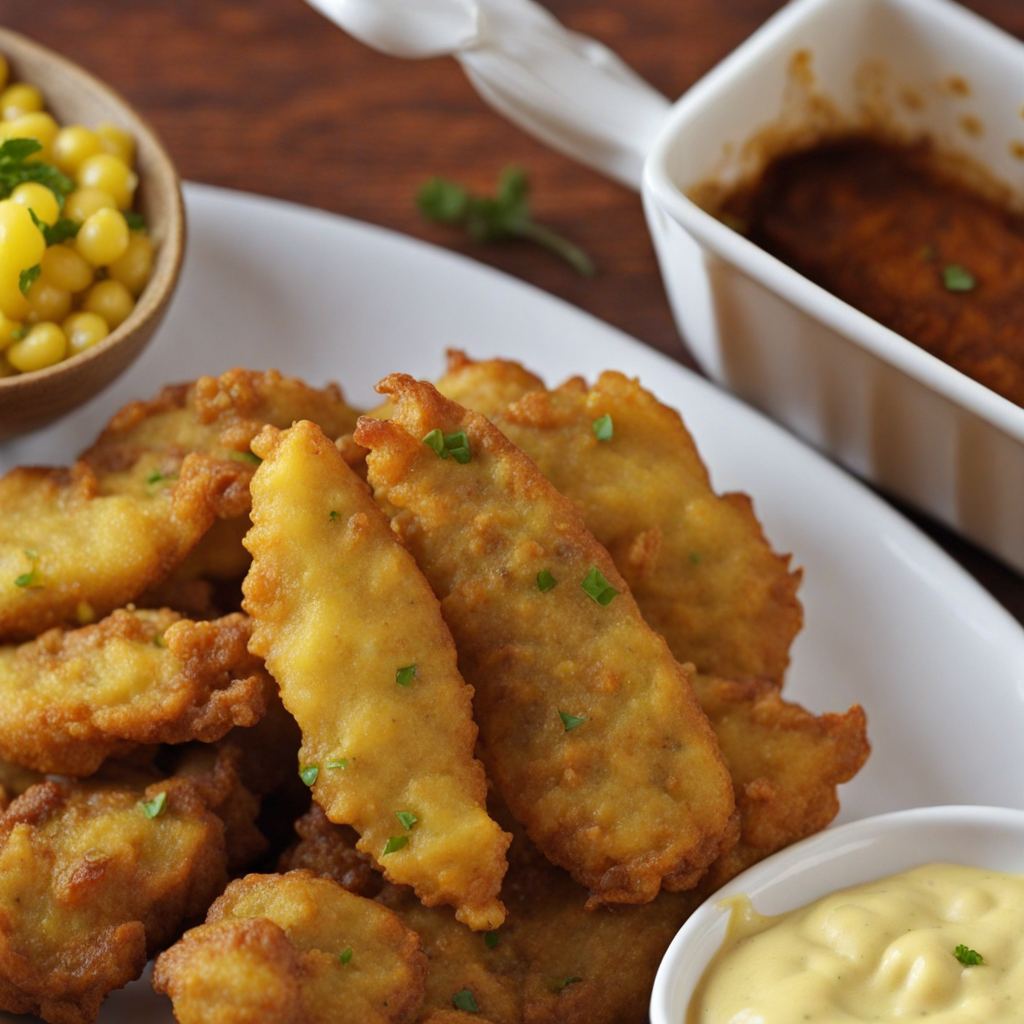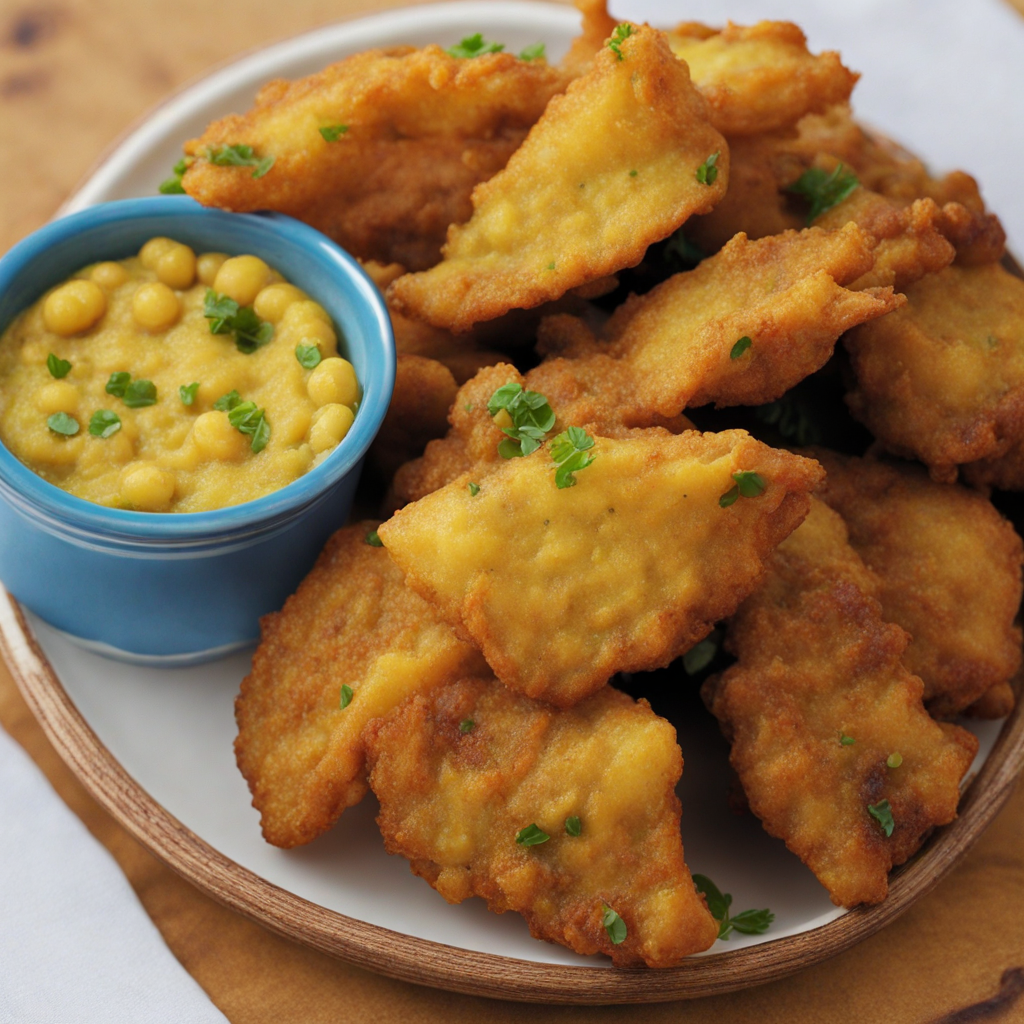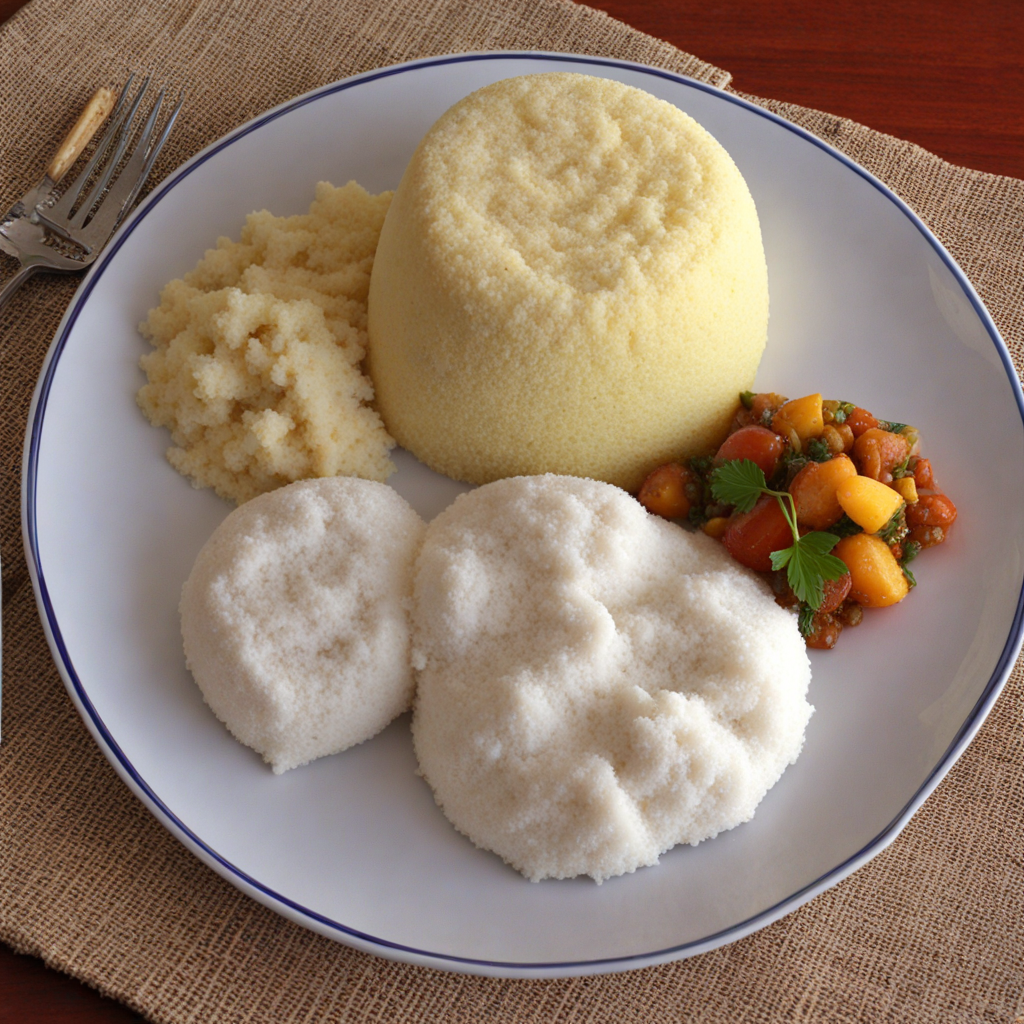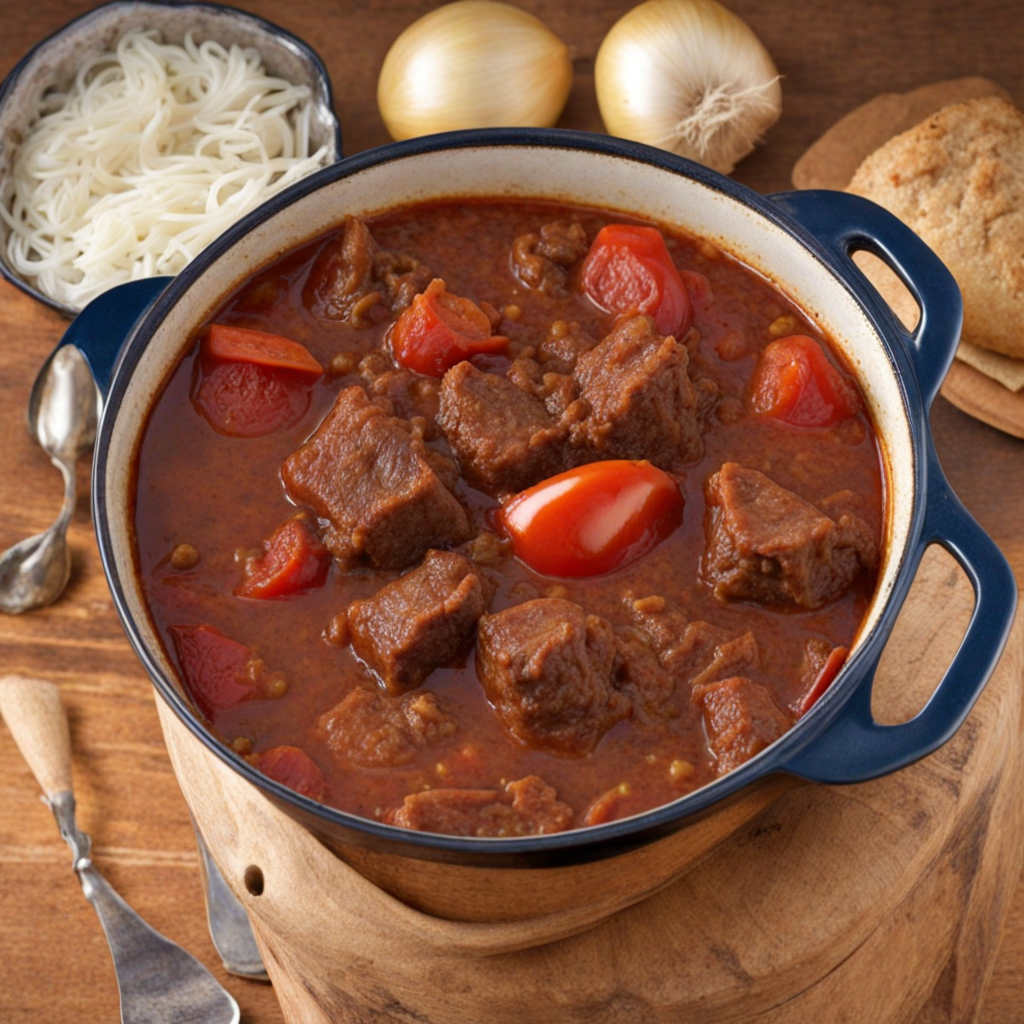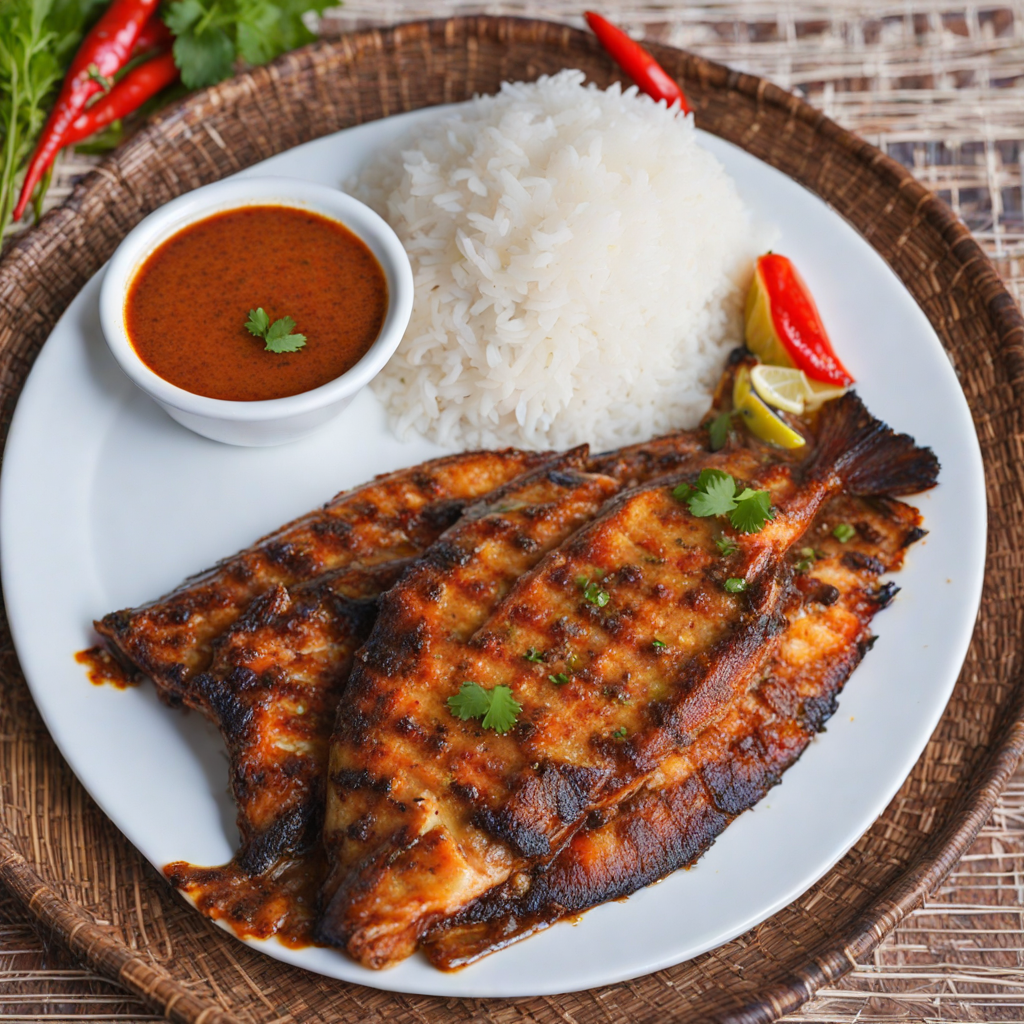Bhajia
Bhajia is a beloved Kenyan snack that showcases the vibrant culinary traditions of the region. These delightful treats are made from thinly sliced potatoes, which are coated in a spiced chickpea flour batter before being deep-fried to a golden crisp. The use of spices such as cumin, coriander, and turmeric not only adds depth of flavor but also brings a warm, aromatic profile that is characteristic of Kenyan cuisine. Each bite reveals a satisfying crunch, followed by the soft, tender potato inside, making bhajia a perfect blend of textures that is sure to tantalize the taste buds. What sets bhajia apart is its versatility; while potato bhajia is the most popular, variations can include other vegetables like onions, spinach, or even eggplant. This adaptability allows bhajia to cater to a wide range of palates and preferences, making it a go-to snack for many. Often served with a side of tangy tamarind or spicy chili sauce, the combination elevates the experience, allowing you to explore the interplay of flavors and heat that Kenyan snacks are renowned for. Bhajia is commonly enjoyed as a street food delicacy, often found at bustling markets and roadside stalls, where the aroma of frying bhajia fills the air. It is perfect for sharing with friends and family, making it a popular choice for gatherings and celebrations. Whether enjoyed as an appetizer, a side dish, or a standalone snack, bhajia offers a delightful introduction to the rich and diverse flavors of Kenyan cuisine, inviting everyone to savor a taste of this unique culinary gem.
How It Became This Dish
Origin of Bhajia Bhajia, a beloved snack in Kenya, has its roots deeply embedded in the Indian community that migrated to East Africa in the late 19th and early 20th centuries. The Indian laborers were initially brought to Kenya to work on the construction of the Uganda Railway, which connected the interior of the continent to the port of Mombasa. As these laborers settled in Kenya, they brought along their culinary traditions, which included a variety of fried snacks. Among these, bhajia quickly found favor among both the Indian diaspora and the local Kenyan population. The term "bhajia" is derived from the Hindi word "bhajiya," referring to a fried fritter. Traditionally, bhajias are made from thinly sliced potatoes or other vegetables, coated in a spiced chickpea flour batter, and deep-fried until crispy. The spices used in the batter vary, but they often include turmeric, cumin, coriander, and chili powder, giving these fritters a vibrant flavor profile. This simplicity in ingredients and preparation made bhajias an accessible and appealing snack. \n\n Cultural Significance In Kenya, bhajia transcends its nature as just a snack; it has become a cultural symbol that embodies the fusion of Indian and African culinary practices. Bhajia is commonly served at social gatherings, celebrations, and during the Islamic holy month of Ramadan, where it is often enjoyed as a popular Iftar snack. The practice of breaking fast with bhajia has further cemented its place in the hearts and palates of many Kenyans, regardless of their ethnic backgrounds. Bhajia stands out as a dish that encourages communal eating. It is often served in large platters, allowing friends and family to gather around and share this delightful treat. The process of frying bhajia also evokes a sense of nostalgia, as many individuals recall family gatherings or community events where the rich aroma of frying potatoes filled the air. This shared experience links generations, making bhajia not just a food item but a vessel of memories and cultural connections. \n\n Regional Variations As bhajia became ingrained in Kenyan cuisine, regional variations emerged, reflecting local tastes and available ingredients. While the classic potato bhajia remains popular, other versions have been developed, including those made with eggplant, zucchini, or even spinach. In coastal regions, where seafood is prevalent, bhajias made from fish or prawns are also a common delight. These adaptations showcase the versatility of bhajia and its ability to cater to diverse palates across the country. In addition to the vegetable variations, the accompanying dips and chutneys have also evolved. Traditionally, bhajia might be served with a tangy tamarind chutney or mint sauce, but contemporary adaptations include a range of spicy and fruity dips that appeal to the modern Kenyan appetite. This fusion of flavors highlights the ongoing evolution of bhajia as it continues to integrate with the dynamic culinary landscape of Kenya. \n\n Bhajia in Modern Kenya In recent years, the popularity of bhajia has surged, especially in urban areas where street food culture thrives. Vendors offering bhajia can be found in bustling marketplaces and along busy streets, serving both locals and tourists eager to experience authentic Kenyan snacks. These vendors often have their unique twist on bhajia, experimenting with ingredients and flavors to attract a diverse clientele. The rise of food markets and festivals has also provided a platform for bhajia, allowing it to be showcased alongside other traditional Kenyan dishes. Moreover, bhajia has made its mark in the digital realm, appearing on various food blogs, social media platforms, and cooking shows. Food enthusiasts and home cooks share their own recipes and variations, promoting bhajia as an essential part of Kenyan cuisine. This increased visibility has contributed to a renewed interest in traditional foods, encouraging younger generations to explore and embrace their culinary heritage. \n\n Health Perspectives While bhajia is often celebrated for its flavor and cultural significance, it is essential to consider its health implications. Traditionally deep-fried, bhajia can be high in calories and fat, leading to concerns regarding its consumption, especially in a health-conscious society. Many vendors and home cooks have begun to explore healthier alternatives, such as baking or air-frying bhajia, to retain its delicious taste while reducing its caloric footprint. Additionally, incorporating whole grain flours or adding more vegetables can enhance the nutritional profile of this beloved snack. The health discourse surrounding bhajia also encourages conversations about moderation and balance in diets. As culinary traditions evolve, so too do the methods of preparation, encouraging a blend of indulgence and health-consciousness. This shift reflects broader global trends where traditional foods are reinterpreted to meet contemporary dietary needs without losing their cultural essence. \n\n Bhajia's Role in Kenyan Identity Bhajia has become an integral part of Kenya's national identity, symbolizing the rich tapestry of cultural influences that define the nation. It serves as a reminder of the historical ties between different communities, illustrating how food can foster unity and understanding. As Kenyans from various backgrounds come together to enjoy bhajia, it reinforces a sense of belonging and shared heritage. In recent years, bhajia has also been featured in various cultural events and festivals, celebrating its significance in Kenyan society. Culinary competitions often showcase bhajia, challenging chefs to innovate while honoring traditional recipes. This celebration of bhajia not only promotes the dish itself but also highlights the broader narrative of Kenya's diverse culinary landscape. \n\n Conclusion As bhajia continues to evolve and adapt to modern tastes, its enduring appeal highlights the rich history and cultural significance of this beloved snack in Kenya. From its Indian roots to its status as a cherished Kenyan treat, bhajia embodies the spirit of culinary fusion and community. It stands as a testament to the power of food in bridging cultural divides, nurturing traditions, and creating lasting memories. The future of bhajia in Kenya seems promising, with endless possibilities for innovation while respecting its rich heritage.
You may like
Discover local flavors from Kenya


